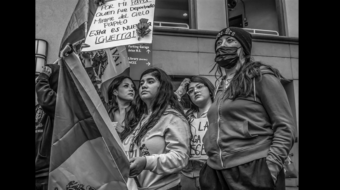California’s budget may be about to stagger over the finish line, nearly 100 days late.
Republican Gov. Arnold Schwarzenegger and legislative leaders signaled earlier this week that they had agreed on a proposed budget to overcome a $19 billion-plus budget shortfall. On Oct. 6, the bipartisan Budget Conference Committee released its 2010-2011 Budget Package. A vote is expected this week.
Though the proposal dodges some of the most draconian cuts proposed earlier in the year by Gov. Schwarzenegger and Republican legislators, it would still impose $7.5 billion in spending cuts. Some $3.3 billion, or nearly half, would be cuts to education, with K-12 schools, community colleges and university systems all feeling the pinch. Part of the cuts would be in the form of deferral of some school payments to the next fiscal year. And both the State University of California and University of California systems would receive compensation for cuts made to their budgets last year.
The new budget avoids the governor’s earlier proposals to do away with CalWORKS, the state’s welfare-to-work program, cut out child care for some 140,000 children from low income families and decimate the In-Home Supportive Services program that cares for poor elderly and disabled Californians in their own homes. But Health and Human Services programs would still be cut by hundreds of millions of dollars.
The prison system would take a $1.1 billion hit, most of it from inmate medical costs. The quality of the state’s prison medical care is already under sharp scrutiny, with a federal judge having placed the system under receivership five years ago.
Current state workers would face pay cuts and contribute more to their pensions, while pension benefits for new state employees would be lowered.
The budget also counts on over $5 billion in federal funds for welfare, prison and education costs – more than had been estimated earlier. It is also based on more favorable revenue forecasts than had been made earlier, and includes a temporary suspension of a business tax break and internal juggling of state funds.
The prolonged budget stalemate – the longest of many in recent years – occurred because California, alone among states, requires a two-thirds legislative majority to pass a budget or to raise taxes. The Democratic legislative majority falls short of that level, and most Republican legislators have signed a no-new-taxes pledge.
On the Nov. 2 ballot is Prop. 25, to pass budgets by a simple majority, while retaining the two-thirds requirement to raise taxes. Supporters say this would be a step in the right direction, though many also call for all fiscal measures to be decided by majority vote.
Last month the California Budget Project reported that according to U.S. Census figures, the state’s poverty rate jumped to 15.3 percent in 2009, the highest rate in over a decade, and higher than the overall U.S. rate of 14.3 percent. Median household income fell by 4.6 percent in the same period.
The project’s executive director, Jean Ross, urged policymakers at the state level to “carefully craft a spending plan that doesn’t further harm a fragile economy. Policymakers should work to minimize spending cuts that economists tell us would exacerbate the downturn,” Ross said in a statement. “And they should carefully target revenue increases – an important part of a balanced budget solution – to high income earners, who fared well over the past decade.”
Photo: PW/Marilyn Bechtel










